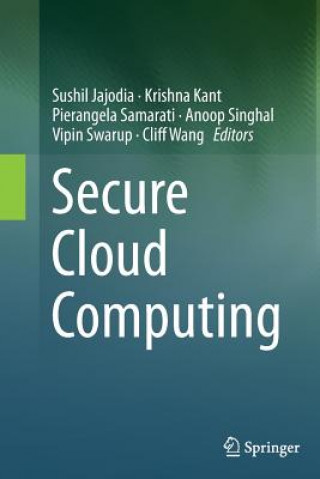
Kód: 13935089
Secure Cloud Computing
Autor Sushil Jajodia, Krishna Kant, Pierangela Samarati, Anoop Singhal, Vipin Swarup, Cliff Wang
This book presents a range of cloud computing security challenges and promising solution paths. The first two chapters focus on practical considerations of cloud computing. In Chapter 1, Chandramouli, Iorga, and Chokani describe t ... celý popis
- Jazyk:
 Angličtina
Angličtina - Väzba: Brožovaná
- Počet strán: 343
Nakladateľ: Springer-Verlag New York Inc., 2016
- Viac informácií o knihe

Mohlo by sa vám tiež páčiť
-

Famous Adventures And Prison Escapes of the Civil War
42.72 € -

Hindu Literature, or, the Ancient Books of India
49.52 € -

The World of Minecraft
14.92 € -

Found - the Rolling Stones
25.32 € -4 %
Darčekový poukaz: Radosť zaručená
- Darujte poukaz v ľubovoľnej hodnote, a my sa postaráme o zvyšok.
- Poukaz sa vzťahuje na všetky produkty v našej ponuke.
- Elektronický poukaz si vytlačíte z e-mailu a môžete ho ihneď darovať.
- Platnosť poukazu je 12 mesiacov od dátumu vystavenia.
Viac informácií o knihe Secure Cloud Computing
Nákupom získate 324 bodov
 Anotácia knihy
Anotácia knihy
This book presents a range of cloud computing security challenges and promising solution paths. The first two chapters focus on practical considerations of cloud computing. In Chapter 1, Chandramouli, Iorga, and Chokani describe the evolution of cloud computing and the current state of practice, followed by the challenges of cryptographic key management in the cloud. In Chapter 2, Chen and Sion present a dollar cost model of cloud computing and explore the economic viability of cloud computing with and without security mechanisms involving cryptographic mechanisms. The next two chapters address security issues of the cloud infrastructure. In Chapter 3, Szefer and Lee describe a hardware-enhanced security architecture that protects the confidentiality and integrity of a virtual machine's memory from an untrusted or malicious hypervisor. In Chapter 4, Tsugawa et al. discuss the security issues introduced when Software-Defined Networking (SDN) is deployed within and across clouds. Chapters 5-9 focus on the protection of data stored in the cloud. In Chapter 5, Wang et al. present two storage isolation schemes that enable cloud users with high security requirements to verify that their disk storage is isolated from some or all other users, without any cooperation from cloud service providers. In Chapter 6, De Capitani di Vimercati, Foresti, and Samarati describe emerging approaches for protecting data stored externally and for enforcing fine-grained and selective accesses on them, and illustrate how the combination of these approaches can introduce new privacy risks. In Chapter 7, Le, Kant, and Jajodia explore data access challenges in collaborative enterprise computing environments where multiple parties formulate their own authorization rules, and discuss the problems of rule consistency, enforcement, and dynamic updates. In Chapter 8, Smith et al. address key challenges to the practical realization of a system that supports query execution over remote encrypted data without exposing decryption keys or plaintext at the server. In Chapter 9, Sun et al. provide an overview of secure search techniques over encrypted data, and then elaborate on a scheme that can achieve privacy-preserving multi-keyword text search. The next three chapters focus on the secure deployment of computations to the cloud. In Chapter 10, Oktay el al. present a risk-based approach for workload partitioning in hybrid clouds that selectively outsources data and computation based on their level of sensitivity. The chapter also describes a vulnerability assessment framework for cloud computing environments. In Chapter 11, Albanese et al. present a solution for deploying a mission in the cloud while minimizing the mission's exposure to known vulnerabilities, and a cost-effective approach to harden the computational resources selected to support the mission. In Chapter 12, Kontaxis et al. describe a system that generates computational decoys to introduce uncertainty and deceive adversaries as to which data and computation is legitimate. The last section of the book addresses issues related to security monitoring and system resilience. In Chapter 13, Zhou presents a secure, provenance-based capability that captures dependencies between system states, tracks state changes over time, and that answers attribution questions about the existence, or change, of a system's state at a given time. In Chapter 14, Wu et al. present a monitoring capability for multicore architectures that runs monitoring threads concurrently with user or kernel code to constantly check for security violations. Finally, in Chapter 15, Hasan Cam describes how to manage the risk and resilience of cyber-physical systems by employing controllability and observability techniques for linear and non-linear systems.
 Parametre knihy
Parametre knihy
Zaradenie knihy Knihy po anglicky Computing & information technology Computer networking & communications Cloud computing
132 €
- Celý názov: Secure Cloud Computing
- Autor: Sushil Jajodia, Krishna Kant, Pierangela Samarati, Anoop Singhal, Vipin Swarup, Cliff Wang
- Jazyk:
 Angličtina
Angličtina - Väzba: Brožovaná
- Počet strán: 343
- EAN: 9781493948833
- ISBN: 1493948830
- ID: 13935089
- Nakladateľ: Springer-Verlag New York Inc.
- Hmotnosť: 5387 g
- Rozmery: 235 × 155 × 21 mm
- Dátum vydania: 27. August 2016
Obľúbené z iného súdka
-

Mastering Proxmox - Third Edition
53.53 € -

Infrastructure as Code
64.35 € -21 % -
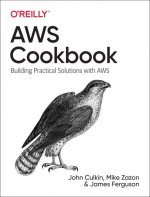
AWS Cookbook
64.35 € -21 % -

Official Google Cloud Certified Professional Data Engineer Study Guide
55.39 € -14 % -

Architecting the Cloud- Design Decisions for Cloud Computing Service Models (SaaS, PaaS, and IaaS)
48.59 € -21 % -
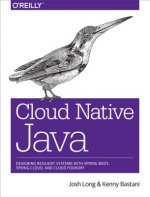
Cloud Native Java
77.01 € -
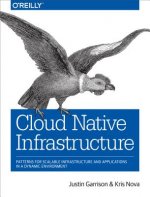
Cloud Native Infrastructure
39.02 € -6 % -

97 Things Every Cloud Engineer Should Know
40.77 € -20 % -

Architecting Cloud Computing Solutions
53.53 € -

Cloud Native Transformation
64.35 € -21 % -
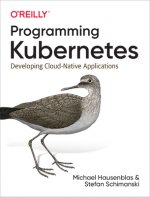
Programming Kubernetes
63.21 € -6 % -
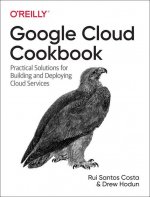
Google Cloud Cookbook
53.33 € -21 % -
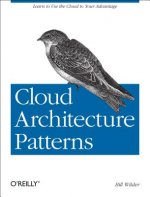
Cloud Architecture Patterns
22.13 € -23 % -

Microsoft Hybrid Cloud Unleashed with Azure Stack and Azure
40.15 € -5 % -

Cloud Computing in Easy Steps
15.64 € -5 % -

Ansible for Kubernetes by Examples
63.63 € -4 % -

OpenStack in Action
71.25 € -

OpenStack Networking Essentials
53.53 € -
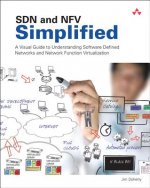
SDN and NFV Simplified
40.15 € -5 % -

Brief Guide to Cloud Computing
12.66 € -13 % -

Hands-On AWS Penetration Testing with Kali Linux
59.40 € -

Cloud Computing Bible
46.43 € -4 % -

Learning SAP Analytics Cloud
73.51 € -

Cloud Computing Basics
71.25 € -
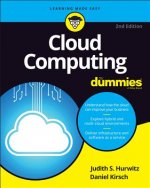
Cloud Computing For Dummies, Second Edition
39.02 € -6 % -
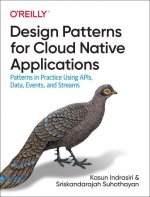
Design Patterns for Cloud Native Applications
63.42 € -6 % -

Architectural Patterns
66.41 € -
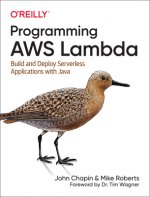
Programming AWS Lambda
63.42 € -6 % -

Microsoft Azure
52.30 € -

Learn Azure in a Month of Lunches
64.96 € -

Amazon Simple Email Service Developer Guide
108.11 € -

Mastering OpenStack -
59.40 € -

VCA-DCV - VMware Certified Associate-Data Center Virtualization on vSphere Study Guide - VCAD-510
39.02 € -6 % -

AWS Identity and Access Management User Guide
97.19 € -3 % -

DevOps: Continuous Delivery, Integration, and Deployment with DevOps
53.53 € -
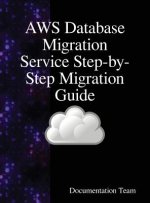
AWS Database Migration Service Step-by-Step Migration Guide
54.98 € -

AWS CodeStar User Guide
54.98 € -

Cloud Computing
17.49 € -5 % -

OpenStack: Building a Cloud Environment
107.70 € -

AWS WAF, AWS Firewall Manager, and AWS Shield Advanced Developer Guide
54.98 € -

Practical AWS Networking
53.53 € -
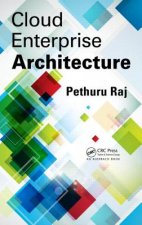
Cloud Enterprise Architecture
193.47 € -

Amazon Polly Developer Guide
54.98 € -

Testing Cloud Services
50.03 € -

VMware Cloud on AWS
58.89 € -3 % -

Amazon WorkDocs User Guide
41.69 € -

Deep Learning AMI Developer Guide
54.98 € -

Cloud Computing
97.61 € -
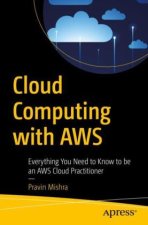
Cloud Computing with AWS
58.89 € -4 %
Osobný odber Bratislava a 2642 dalších
Copyright ©2008-24 najlacnejsie-knihy.sk Všetky práva vyhradenéSúkromieCookies



 21 miliónov titulov
21 miliónov titulov Vrátenie do mesiaca
Vrátenie do mesiaca 02/210 210 99 (8-15.30h)
02/210 210 99 (8-15.30h)